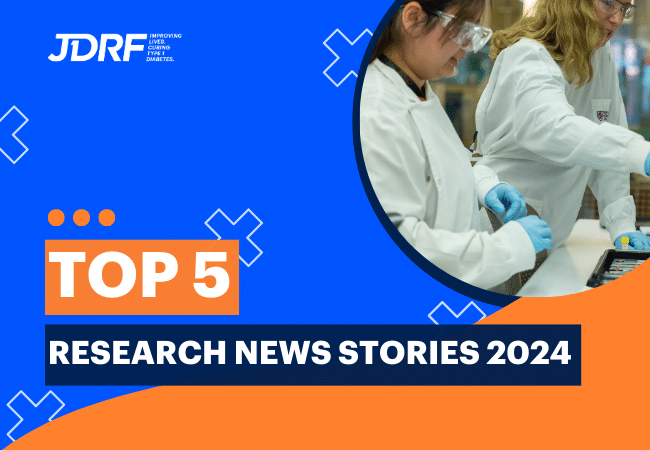Type 1 diabetes research breakthrough shows insulin-producing cells can be regenerated

We could be one step closer to replacing the need for regular insulin injections in people living with type 1 diabetes (T1D), thanks to JDRF-funded Australian research that was published this week in the prestigious Nature journal.
Why is this research important?
During T1D development, the immune system mistakenly attacks the insulin-producing beta cells in the pancreas. This results in people with T1D no longer being able to make their own insulin and requiring lifelong insulin replacement therapy via either insulin injections or infusion through an insulin pump.
Therefore, replacing the destroyed beta cells from sources outside the body, or regenerating beta cells from within the body, holds promise to reverse T1D.
It has been shown that islet transplantation and whole pancreas replacement using donor tissues or organs reduces or removes the need for injecting insulin in those with T1D. However, the limited availability of donors, along with the need for life-long immunosuppression, make this option unsuitable for the majority of people living with T1D.
This is why finding ways to regenerate the body’s lost beta cells is so important.
What did the research find?
The research project, funded by JDRF and led by Professor Sam El-Osta from the Baker Heart and Diabetes Institute, investigated whether treatment with two drugs could regenerate insulin-producing cells in donor pancreases.
Using donor pancreases from a child and adult with T1D, and from a donor without T1D, the team demonstrated that pancreatic cells that don’t normally produce insulin – called ductal cells –could be made to behave like beta cells using two drugs called known as EZH2 inhibitors (GSK 126 and Tazemetostat). Specifically, these newly generated beta-like cells were able to express genes that are associated with beta cells and, importantly, produce and secrete insulin.
The drug GSK126 is already FDA-approved for use in other diseases. The research project was the first time Tazemetostat has been used for this purpose.
These are incredibly exciting findings, as they suggest there is a pathway for people with T1D to restore insulin production, potentially using cells from their own body. This method could negate the need for immunosuppressive treatments used with pancreas replacement and could address the issue of limited availability of donated islets needed for islet transplantation.
These therapies work in a different way to other therapies also being investigated which halt the immune system attack. These findings therefore represent another avenue to tackle T1D and enable people living with the condition to potentially achieve independence from round-the-clock insulin injections.
What’s next?
This research holds promise for a cure for T1D, and JDRF will continue to support research of this avenue until our vision of a world without T1D is unlocked.
JDRF has been involved from an early stage of this research, with this breakthrough an extension of previous JDRF-funded work also led by Professor El-Osta and his team.
Further work with pre-clinical models are now needed to take this research to the next stage. This is why we have already committed over $1 million to extend this project.
Our research portfolio
Groundbreaking projects like these are only possible with support from our community. The future of 130,000 Australians living with T1D and the eight more diagnosed each day depends on it.
To get involved, donate here.




